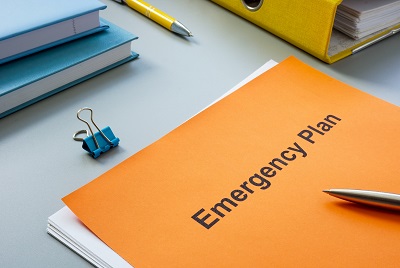How a CMMS Can Strengthen Your Healthcare Facility’s Emergency Management
Emergencies in the healthcare service industry—natural disasters, infrastructure failures, or cyberattacks—can occur at any moment. To navigate these disruptions, organizations rely on emergency management (EM) plans. A powerful yet often underutilized tool in these plans is your computerized maintenance management software (CMMS). A CMMS can help facilities create comprehensive emergency plans (including ensuring the plan meets regulatory compliance standards), prepare for an impending disaster, recover efficiently, and document activities for future review.

A truly comprehensive CMMS supports the four main phases of emergency management: prevention, preparation, response, and recovery.
1. Prevention
Prevention involves identifying potential risks before they become emergencies and ensuring critical systems are ready at all times. Your CMMS should strengthen this phase by supporting proactive maintenance and risk monitoring:
- Rounding & Inspections: Automate regular surveys of critical systems, noting hazards like water leaks or blocked exits. These early detections can prevent issues from escalating.
- SSA Inventory & Assessment: Maintain an up-to-date record of structures, systems, and assets (SSAs), complete with risk profiles and emergency roles.
- Scheduled Maintenance: Routine checks of vital equipment like emergency power systems reduce the risk of failure when it matters most.
2. Preparation
When emergencies can be predicted, taking efficient action to get ready becomes key. A comprehensive CMMS helps ensure environments and staff are informed and ready:
- Disaster Readiness Work Orders: Pre-defined tasks ensure consistency when preparing for events like storms or outages.
- Supply & Asset Coordination: Generate lists and track the distribution of essential materials and equipment.
- Drills & Mock Exercises: Use the CMMS to run and document drills, identify weaknesses, and keep teams sharp.
- Vendor Readiness: Track and confirm vendor participation in your EM plan.
3. Response
During a crisis, speed and organized coordination are essential. Your CMMS can play a critical role by facilitating efficient communication and access to necessary information:
- Mobile/Remote Access: Teams can respond from anywhere, log updates in real time, and communicate efficiently.
- Resource Dispatching: Assign work orders, notify teams, and track supply usage as events unfold.
- Facility Data Access: Share building layouts and SSA data with emergency services to aid response efforts.
4. Recovery
After the dust settles, the focus shifts to restoration and review to optimize future emergency response activities. Your CMMS should support this phase by streamlining post-incident evaluation and continuous improvement efforts, including:
- Damage Assessments: Generate inspections to identify and prioritize repair needs.
- Analytics & Reporting: Pull data on time, resources, costs, and response effectiveness to build after-action reports.
- Debriefs & Plan Updates: Log feedback, record meetings, and propose changes to improve future responses.
A robust CMMS doesn’t just manage maintenance—it can be the backbone of your emergency response game plan. From identifying risks to tracking recovery, it ensures preparedness, supports compliance requirements, and strengthens your organization’s resilience. Investing in the right configuration and training can transform your CMMS into a strategic tool for safeguarding operations and people when it matters most.

Rick Joslin is the senior solutions architect at FSI, a provider of CMMS purpose-built for healthcare service professionals.
The post How a CMMS Can Strengthen Your Healthcare Facility’s Emergency Management appeared first on Facilities Management Advisor.

